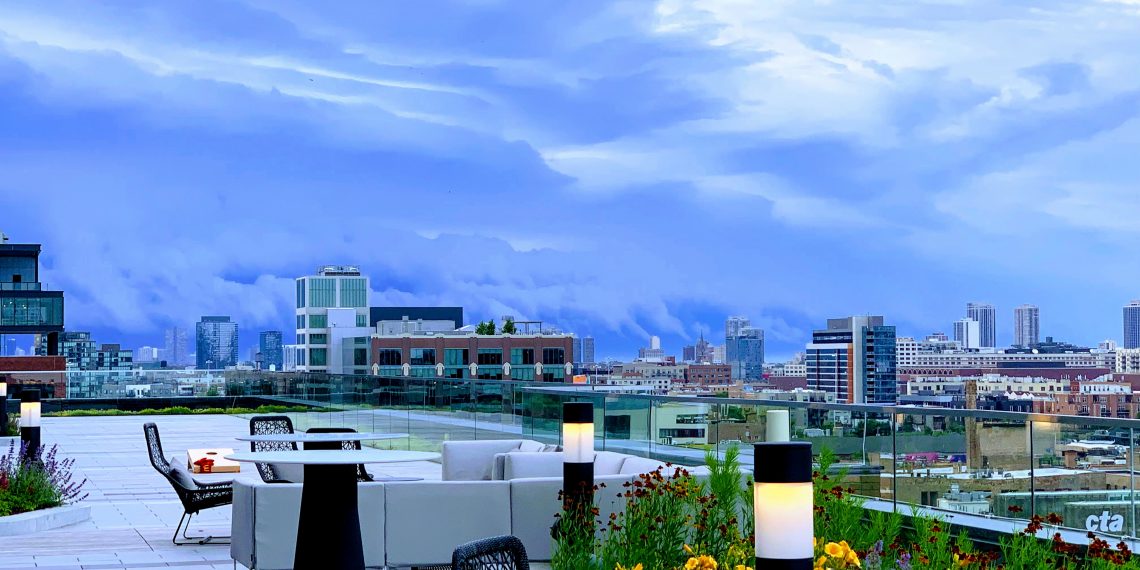The pandemic influenced a residential shift in consumption patterns. A year at home increased individuals’ awareness of pollution production, increasing their interests in sustainability. As eco-consumer rates in America rise, the demand for conscious goods and services follows.
President Biden also influenced residential sustainability by enhancing eco-friendly construction regulations. He plans on decreasing the adverse effects of infrastructural advancements using renewable electricity, energy-efficient appliances and water conservation practices. Limiting atmospheric and surface pollution helps America reach its carbon neutrality goal.
What is the LEED Certification?
The U.S. government developed the Leadership in Energy and Environmental Design (LEED) certification in the late 90s, expanding its regulations over the years. Officials created the accreditation in response to the adverse environmental effects associated with construction. LEED enhances transparency in the building industry, helping companies and residents decrease their ecological impacts.
Many construction machines, tools and vehicles run on fossil fuels. During combustion, the energy source releases greenhouse gas emissions into the atmosphere. The elements alter Earth’s natural temperature control process.
Organically, the atmosphere absorbs solar radiation, generates heat, warms the surface, reclaims additional energy and sends it to space. When greenhouse gas emissions invade the environment, they alter the atmospheric composition. Air pollutants produce more heat from sunlight than conventional elements.
They also contain excess energy in the environment for extended periods. The over entrapment and overproduction of heath increases Earth’s temperature over time. Construction sites also utilize vast quantities of water, generating runoff challenges.
When water leaves a site, it carries surface-level pollutants with it like pesticides and synthetic fertilizers. It then filters into the ocean, where the elements fuel algal blooms, depleting local oxygen levels. Without adequate oxygen levels, the region becomes uninhabitable, creating dead zones.
LEED-certified buildings decrease environmental degradation by improving energy and water efficiency features. A committee evaluates a structure’s innovation, efficiency, material use and atmosphere, rating them on a sustainability points scale. If the building successfully meets the energy and resource conservation standards, it is eligible for the certification.
Financial Benefits
Sustainable buildings generate a significant portion of the energy they consume. They create electricity from on-site solar panels or wind turbines. Both systems increase a construction company’s eligibility for tax credits.
President Biden recently extended the solar tax incentive, which was initially expiring in 2020. The credit remains at 26% until the end of 2022. All green buildings with solar installations made before 2025 can receive a tax credit.
Biden also extended the wind incentive upon entering office. All installations conducted in 2021 are eligible for a 60% tax credit. Accessing the incentive can significantly decrease construction costs, saving a company money over time.
Generating on-site renewable energy is essential to a LEED building. Structures gain additional points for installing wind turbines and solar panels. The sustainable systems also increase a building’s value.
The current real estate market views solar panel installations as a renovation, similar to a bathroom renovation or finished basement. Some properties sell for 15,000 dollars above their previous asking prices. They also ensure future and current rental success.
Consumers prefer LEED building rentals over conventional properties. Their high energy efficiency rates significantly decrease utility costs, helping residents save money over time. Additionally, they help individuals shrink their carbon footprints, enhancing their competitiveness on the market.
Recession-Proof Practices
LEED-certified construction practices also increase the sustainability of companies through economic challenges. The pandemic generated another recession in America. Luckily, government regulations left eco-friendly builders unaffected.
States recently enhanced their eco-conscious construction regulations, increasing the demand for LEED-certified building processes. California developed a Green Building Code (CALGreen), influencing structural features.
The code requires that buildings contain compatible electric vehicle charging technology. They also must have efficient stormwater drains, limiting toxic runoff. As states’ regulations increase, the demands for LEED-certified construction companies will follow.
National Regulations
Biden’s national carbon neutrality goal may alter the country’s building demands down the line. More companies are developing net-zero structures, improving their brands’ images and customer appeals. The government and commercial support of eco-conscious building practices may influence construction regulations.


